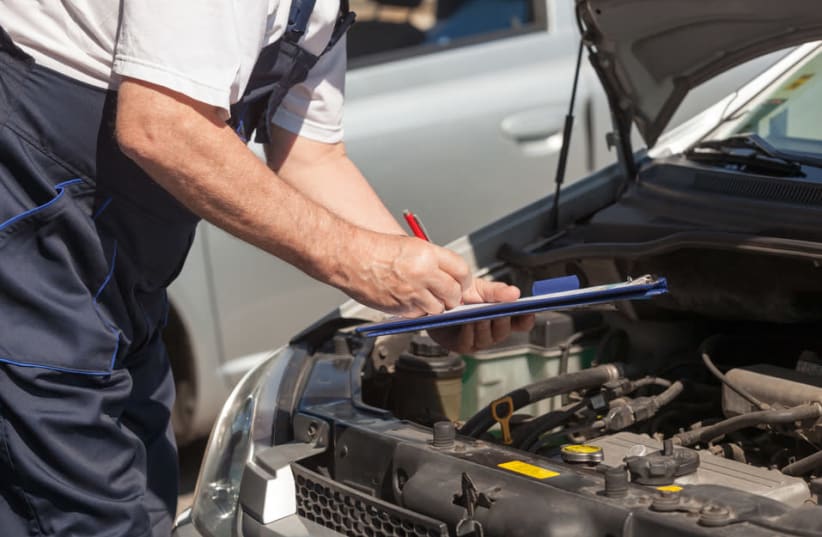It’s not unlikely that a blown engine may affect the car’s value to the extent that it becomes a total loss. As such, continued maintenance and oversight of your engine’s health is crucial to the longevity of the vehicle. There are services out there that may be able to help you get cash for your less-than-perfect car — however, it definitely behooves the owner to be extra careful in these types of situations.
Fortunately, an engine light doesn’t usually mean that you need to replace the whole part. A car engine is made of several components, large and small, that can malfunction. Many of these parts are easy and inexpensive to fix. However, more severe issues can and do occur. Types of Engine IssuesBecause an engine is composed of multiple pieces, there are a number of issues that it can have. Some are easy to fix while others are more complicated and costly.
When you see the check engine light come on, your car can be experiencing a range of issues that can be identified by a technician with a hand-held diagnostic device. Some of the most common reasons that your car will indicate an engine issue are:
-
A faulty oxygen sensor.
-
Catalytic converter malfunctions.
-
Ignition coil issues.
-
Damage to the EVAP purge control valve.
Even seemingly small problems can result in severe damage like engine failure, including:
-
A broken water pump.
-
Damaged oil pump.
-
Old engine oil.
-
Low oil level.
Costs of Repairs
The total cost of making engine repairs can range from $0 to $10,000 or more depending on the piece or pieces that need repair and the extent of the damage.
For instance, a loose gas cap can be tightened for free or replaced for less than $20. However, the price of replacing a catalytic converter averages out to $1,200, and putting in a new ignition coil and spark plugs costs around $400.
Engine parts that are commonly replaced include:
-
Gaskets.
-
Timing belts.
-
Valve springs.
-
Oil pumps.
-
Bearings.
Pistons, camshafts, and crankshafts are major parts that usually do not need to be repaired as frequently. As a car owner, you might be worried after looking at these costs. However, it is important to remember that these issues don’t all happen at once if you are vigilant about car maintenance.
Additionally, newer vehicles are less likely to have issues with major parts early on (depending on the make and model). Problems with larger parts develop over time and you can prolong the health of them by promptly addressing even “small” engine issues.
Most Expensive Engine Parts to Replace
Without a doubt, a total engine replacement will be the most expensive procedure. A rebuilt or remanufactured engine can cost between $3,000 and $10,000 depending on the vehicle.
Oftentimes, there is a range of prices that a rebuilt engine could cost even within one car make and model. Typically, a rebuilt engine is approximately 10 to 20 percent of the cost of a new vehicle.
Even if you don’t need to replace your entire engine, there are still certain components of it that carry a high price tag when they do need to be repaired or replaced.
A broken camshaft can cost over $2,000 to replace. Fortunately, this repair is relatively easy to avoid as they don’t typically break down over time — they just need regular maintenance and oil changes or proper maintenance of valve spring pressure.
Transmissions are notoriously expensive parts and often the deciding factor for drivers to get rid of an old car and simply get another one. These parts typically cost between $1,000 and $4,000. While this is not as expensive as replacing an entire engine, a new transmission on an old vehicle is often not worth the price for many drivers.
Fuel pumps are also major components that carry a large price tag. Over time, low-quality fuel can damage the pump as metal shards break off and build up, resulting in a $400 to $800 replacement price.
Replacing An Entire Engine
Replacing an entire engine is a step that most car owners do not want to take.
Typically, replacing an engine means rebuilding it. In this process, a skilled machinist removes your damaged engine and extracts all of the pieces that are no longer usable. Then, new parts are installed in their place. These parts either meet or exceed performance standards.
New components can be especially effective for older vehicles and result in increased mileage, efficiency, and a decrease in emitted pollutants. Although replacing an entire engine is pricey, it might still be more worth than getting another car with a newer engine in some cases.
